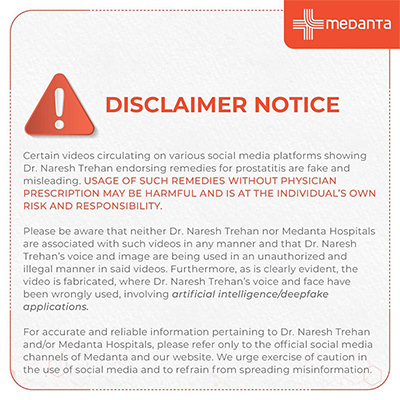What is Minimally Invasive Parathyroidectomy?

TABLE OF CONTENTS
Surgery has changed a lot over time. New methods focus more on lowering pain and speeding up recovery for patients. Minimally invasive parathyroidectomy is one such method. This procedure deals with specific problems in the parathyroid glands. Dr. Deepak Sarin from Medanta Gurugram goes into the details of this advanced surgical technique.
Explaining Minimally Invasive Parathyroidectomy
Dr. Sarin explains that minimal access focused parathyroidectomy involves making a small cut and concentrating on removing just one parathyroid gland. This method marks an important step forward compared to older surgeries that needed bigger cuts and more exploration in the neck area.
When Is This Done?
Doctors turn to this focused technique when treating patients with primary hyperparathyroidism, or PHPT. PHPT happens when one or more parathyroid glands make too much parathyroid hormone. This is caused by the gland tissue either growing too large or developing.
How Are Patients Assessed?
Dr. Sarin says patients go through procedures called "localising studies" to see if they qualify for invasive parathyroidectomy. These tests figure out if one gland or more is causing problems.
Localising tests might include:
Ultrasound - This imaging test shows if the parathyroid glands are larger than normal.
Sestamibi scan - This nuclear scan helps locate any overactive parathyroid tissue.
4D CT scan - This advanced scan creates detailed images of the glands to aid diagnosis.
How the Surgical Method is Chosen
Using these diagnostic tests, doctors figure out if just one gland is either abnormal or enlarged, or if all four parathyroid glands in the neck are affected by the disease. Deciding the right surgical plan depends on this evaluation.
Dr. Sarin explains that when the tests indicate involvement of one gland, patients may get the option of a focused and less invasive surgery. On the other hand, if more than one gland is involved, another surgical method might be required.
The Procedure
Surgeons perform invasive parathyroidectomy using a small cut that allows direct access to remove the abnormal parathyroid gland. This focused method uses precise placement of the incision. The smaller cut improves appearance and often brings faster recovery and less pain after surgery.
Advantages of Minimally Invasive Parathyroidectomy
Dr. Sarin points out several perks of this technique:
Faster operation - This surgery usually takes less time than traditional methods
Shorter hospital visits - Patients often need to stay in the hospital one night
Great results - It offers a "very high permanent cure rate of the disease"
Final Thoughts
Minimally invasive parathyroidectomy stands out as a major step forward in treating primary hyperparathyroidism when it affects just one parathyroid gland. Surgeons can focus on the affected gland by making a small cut. This method gives patients a less invasive solution with good results and quicker recovery.
To treat primary hyperparathyroidism, talking to a trained surgeon about this option might help you find an effective way to handle the condition while keeping your daily routine intact.
FAQs
What is minimally invasive parathyroidectomy?
Minimally invasive parathyroidectomy involves making a small cut to target and take out just one problematic parathyroid gland. It avoids the need to open up and check all four glands.
Who should consider this procedure?
Doctors recommend this surgery to treat primary hyperparathyroidism (PHPT) when tests like ultrasound, sestamibi scan, or 4D CT pinpoint that one parathyroid gland is enlarged or causing problems.
What tests will decide if I qualify for this surgery?
Doctors use localisation tests like ultrasound, sestamibi scans, and 4D CT scans to find out if one parathyroid gland is causing the problem. If that's the case, you might qualify for a less invasive procedure.
How long do you stay in the hospital after this surgery?
Most patients need to stay in the hospital just one night. This makes it a shorter option compared to the older methods.
What if all four parathyroid glands are impacted instead of just one?
If the disease involves all four parathyroid glands instead of just one then a minimal access approach might not work. In such cases, doctors would choose another method.


